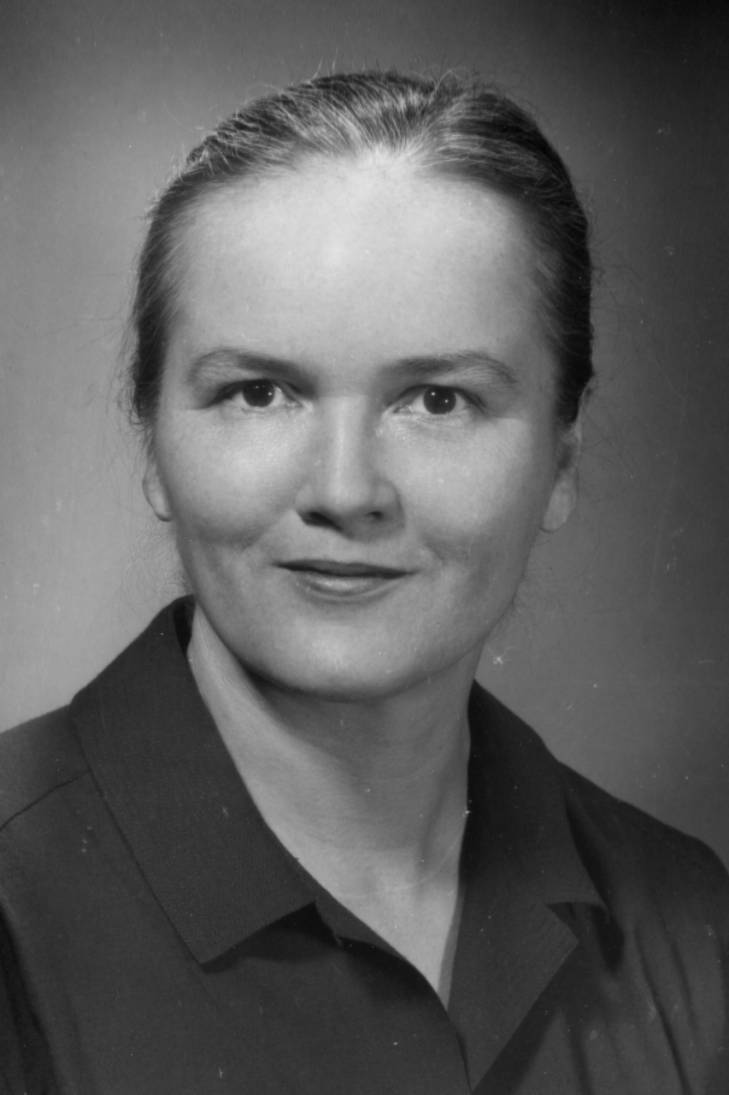Joan Eliot Raup Rosenblatt, a fellow of both the Institute of Mathematical Statistics and the American Statistical Association and former President of the Women’s Caucus of the ASA, died in Rockville, Maryland on 5 December 2018 at the age of 92. Her distinguished career in public service includes four decades at the US National Bureau of Standards (later, National Institute of Standards and Technology). Rosenblatt first joined the NBS in 1955 as a Mathematician, rising through the ranks to become first Assistant Chief and then Chief of the Statistical Engineering Section. In 1979, she became Deputy Director of the NBS Center for Applied Mathematics, and eventually became Director of the Computing and Applied Mathematics Laboratory at NIST, the position from which she retired in 1995.
A native of New York City, Joan Eliot Raup was born on 15 April 1926, the eldest child of two academics, Clara Eliot, an economist at Barnard College, and R. Bruce Raup, a philosopher at Columbia Teachers College. She attended the experimental Lincoln School at Teachers College and, after completing high school in Westchester County, earned a bachelor’s degree in mathematics from Barnard College at the age of 20. After Barnard, Joan Raup was awarded one-year internship in Washington, DC, funded by the Rockefeller Foundation’s National Institute of Public Affairs.
The internship brought her first to the US Census Bureau and then to the Bureau of the Budget, where she worked in the Division of Statistical Standards, then under the direction of Stuart A. Rice. At that time, Rice was deeply involved in planning the first postwar International Statistics Conferences, to be held in DC in September 1947. At the end of her internship year, Joan Raup joined the staff of the conferences’ organizing committee, helping to edit the five-volume conference proceedings. During 1948 she also returned to work briefly as a statistical analyst at the Bureau of the Budget. By the end of two years’ immersion in statistics, she had made many valuable contacts—among them, Churchill Eisenhart at NBS and David Rosenblatt, a senior economist at the Budget Bureau, whom she would marry in 1950.
She had also decided to pursue a PhD in mathematical statistics. Between 1948 and 1956, Joan Raup Rosenblatt worked on a PhD in the relatively new program in mathematical statistics at the University of North Carolina at Chapel Hill. After her marriage, much of her work toward the PhD was completed in absentia, or while commuting between Chapel Hill and DC. Her dissertation, On a Class of Nonparametric Tests, was written under the direction of Wassily Hoeffding.
During her last year of graduate study, Churchill Eisenhart hired her to work in the statistical group at NBS. At NBS (later, NIST), she worked on a variety of statistical applications, including electronic system reliability, colorimetry, hydrology, and studies of coal mine dust and blood lead levels. But perhaps her greatest level of public visibility came as a result of her involvement in the Vietnam-era draft lottery.
From 1969 through 1975, the US Selective Service System conducted an annual lottery to determine the birthdate order in which all men aged 18–26 would be called to serve in the US armed forces during the coming year. Prior to 1969, the SSS had used the “draft the oldest man first” method; the lottery was instituted in an attempt to make the process of induction into an unpopular war appear at least somewhat more fair. But the 1969 lottery drawing was widely seen as insufficiently random (and seemed to increase public resistance to the Vietnam-era draft). In response, the Selective Service turned to NBS to produce a more effective method of randomization for each of the remaining lotteries. During this period, Joan Rosenblatt often served as the public face of the lottery randomization process, appearing in at least one press conference and serving as an official observer for at least one of the lottery drawings. With James J. Filliben, she coauthored a widely-cited 1971 Science article describing the randomization methodology.
After her retirement from NIST, Joan Rosenblatt continued to live in Washington, DC until 2009, when she moved to a retirement community in Bethesda, Maryland. Her husband David Rosenblatt, also a fellow of the ASA, died in 2001; they had no children. She was also predeceased by a younger sister and brother, and is survived by a sister and brother-in-law, Ruth Raup Johnson and Miles Johnson; a brother-in-law, statistician Murray Rosenblatt; and several nieces and nephews.
—
Written by Margaret A.M. Murray, University of Iowa

Comments on “Obituary: Joan Rosenblatt, 1926–2018”